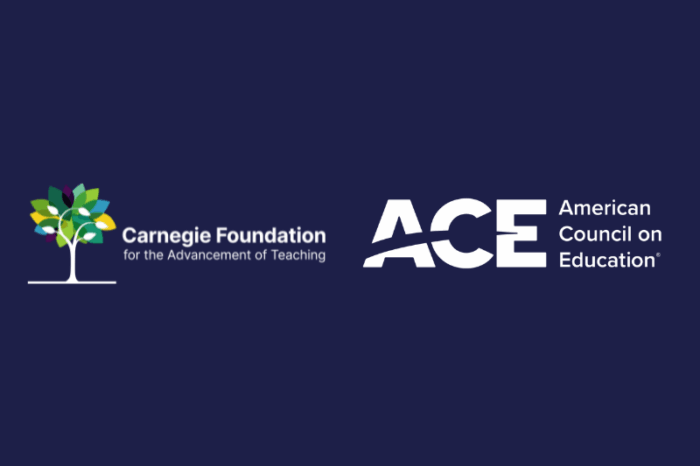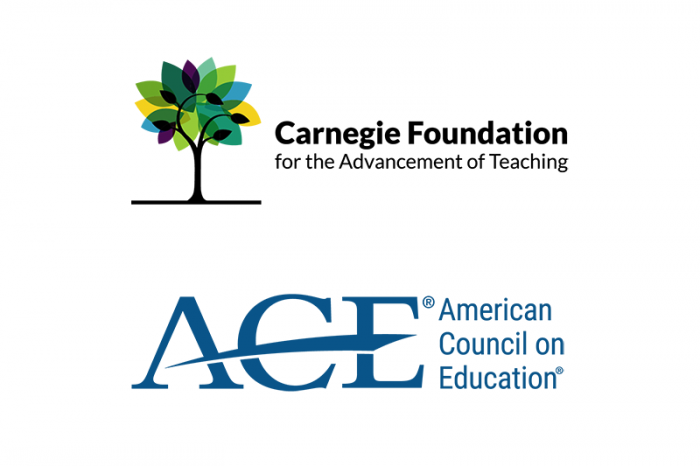Washington, D.C. — The American Council on Education (ACE) and the Carnegie Foundation for the Advancement of Teaching (Carnegie Foundation) published today the 2025 Research Activity Designations, unveiling an updated methodology intended to better account for and reflect the multifaceted, wide-ranging research landscape of higher education institutions in America. Click…
Carnegie Classifications
The Carnegie Classifications of Institutions of Higher Education® (CCIHE) are the nation’s leading framework for describing diverse U.S. higher education institutions, so that their work and impact can be understood in relation to each other. Launched in 1970, CCIHE was first published in 1973 and has been periodically updated to reflect changes among colleges and universities.
Intended to support research and policy analysis, the Carnegie Classification uses empirical data about characteristics of students and faculty and the work of the institutions to identify categories of institutions based on function and mission, including doctoral-granting institutions, comprehensive universities and colleges, liberal arts colleges, two-year colleges and institutes, professional schools, and other specialized institutions. CCIHE has grown to include classifications based upon instructional program, enrollment profile, size and setting, and certain elective classifications for Community Engagement and Leadership for Public Purpose.
As CCIHE turns 50, Carnegie and the American Council of Education (ACE) have joined forces to bring together the various classifications into a suite of indices that, taken collectively, will provide a broad base of dimensions along which universities may define themselves and demonstrate how they are pursuing their missions. This will involve taking a broad look at the ways in which classification systems can promote institutional diversity and excellence in a number of domains, such as access, teaching, learning outcomes, social and economic mobility of students, and community and civic development and service.
Building from this shared vision, Carnegie and ACE will undertake the development of a broader suite of classifications, starting with the Student Access and Earnings Classification that will challenge higher education institutions to meaningfully address the nation’s pressing social and economic concerns. Other possible elective classifications include ones that attend to extraordinary commitment to and investment in sustainability, indigenous-serving institutions, as well as international expressions of the classifications.
The Carnegie’s partnership with the American Council on Education is a unique and powerful opportunity to collaborate with institutions of higher education nationwide. Over time, this partnership can support institutions to mine and share effective practices; catalyze networks of institutions that learn and improve together; and identify and amplify the work of postsecondary education institutions that effectively serve Black, Latinx, Indigenous, and first-generation students.
Carnegie Classifications to Make Major Changes in How Colleges and Universities Are Grouped and Recognized, Set Clear Threshold for Highest Level of Research
ACE and Carnegie Foundation announce new, more transparent methodology for the current “R1” designation and overall shift to multi-dimensional categories that reflect the diversity of today’s colleges and universities Washington, D.C. — Today, the American Council on Education (ACE) and the Carnegie Foundation for the Advancement of Teaching (Carnegie Foundation)…
The Carnegie Foundation and the American Council on Education Announce Partnership on the Carnegie Classifications for Institutions of Higher Education
The Carnegie Foundation for the Advancement of Teaching and the American Council on Education (ACE) are pleased to announce their collaboration on the next incarnation of the Carnegie Classifications. For the first time, the Universal and Elective Classifications will be brought together in a single organizational home at ACE. The…








